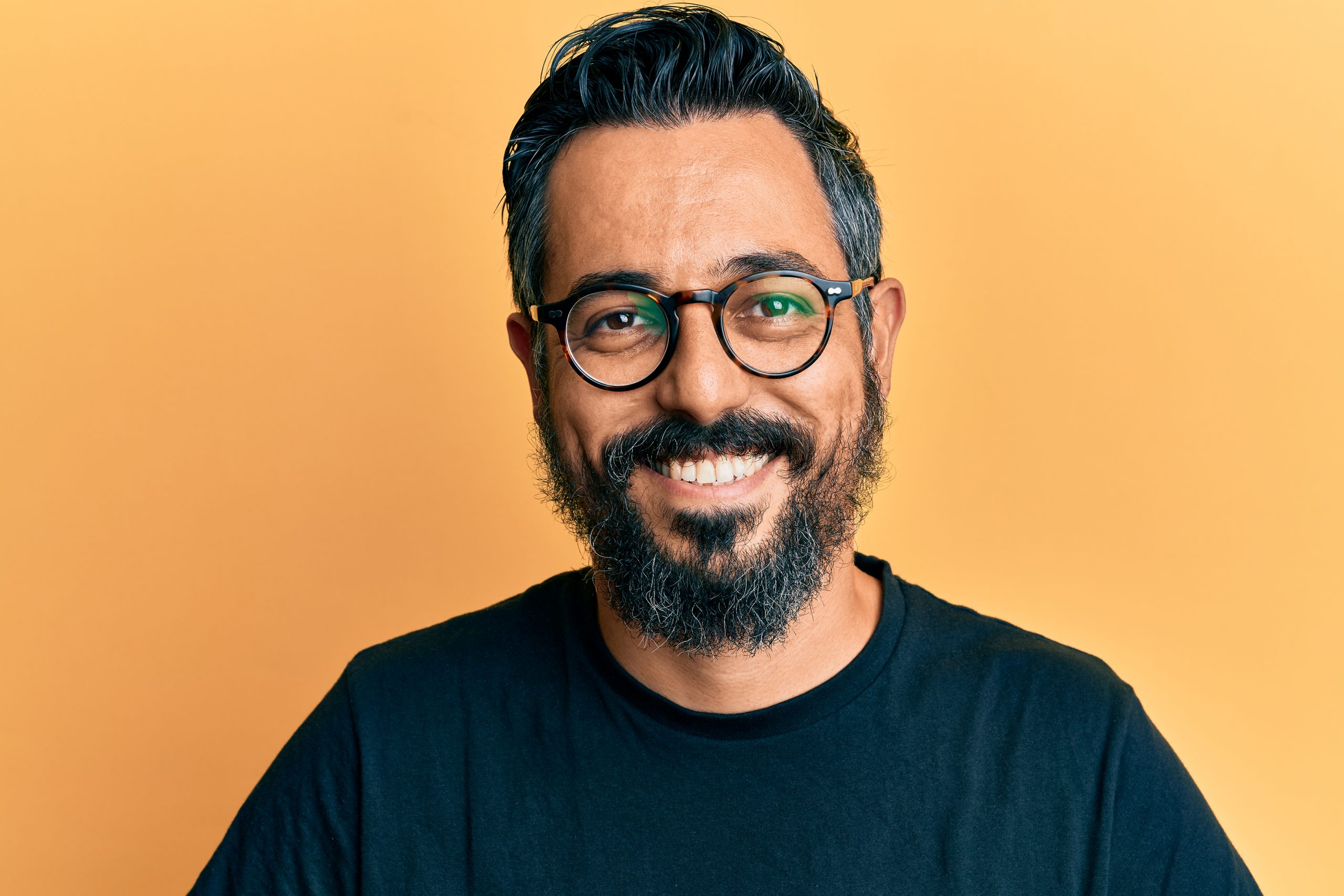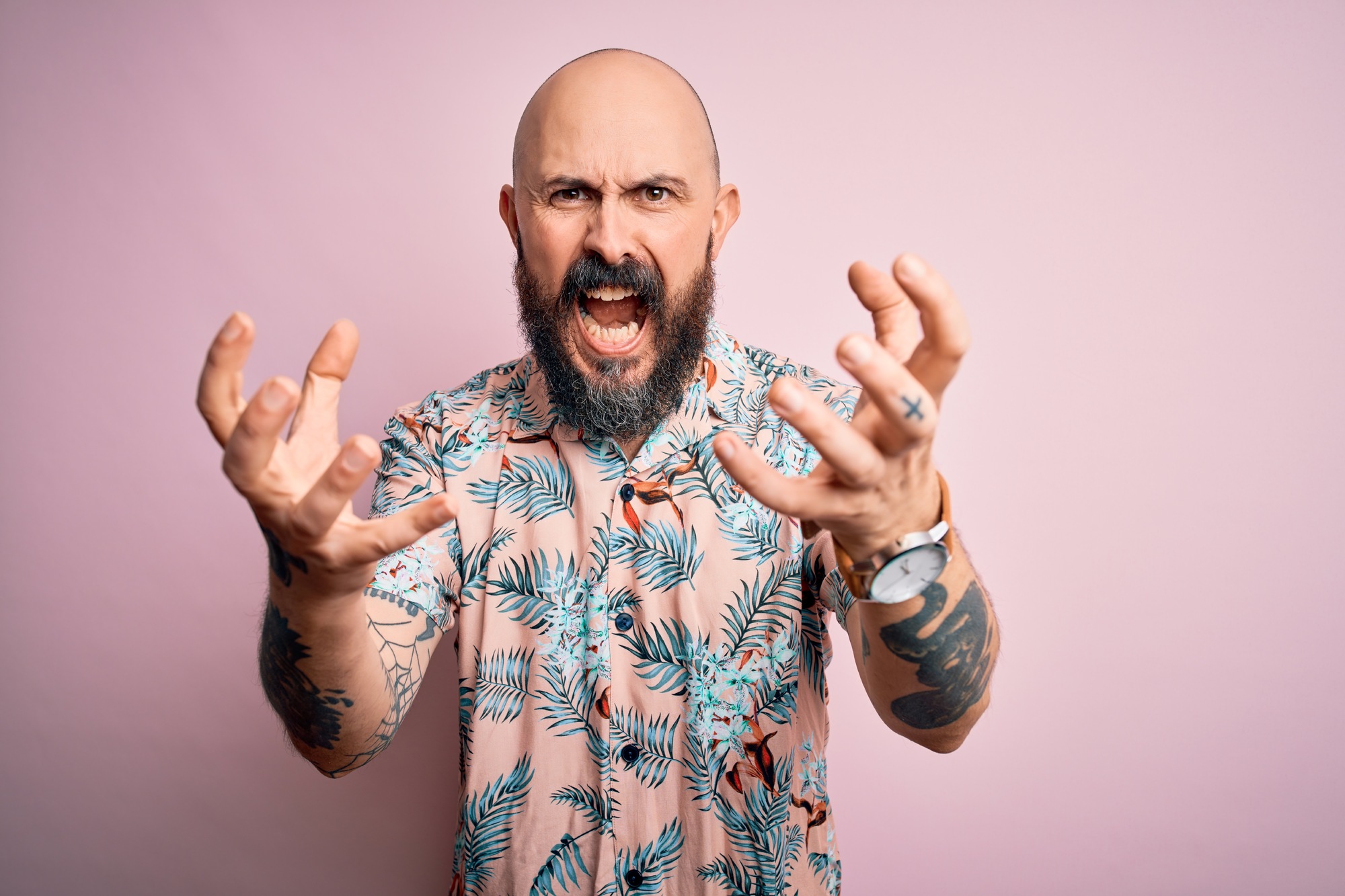Today we are very happy to interview Aaron Amat of Kraken Images, possibly one of the most industrious stock photography producers in the business. Microstock Rank ranks him in the top 15 contributors on Shutterstock and we are proud Stock Performer is a valuable tool for him.

We reached out to Aaron to talk about his work, how he sees the industry and what he recommends others. There is a lot of valuable information, so enjoy!
Hello Aaron, it is a pleasure to have you with us! Where are you from? And where do you live?
It is a pleasure! I have been a Stock Performer user for many years now, and a faithful follower of your blog! So it is an honor to be here. I’m from Spain, specifically from Alicante, located in the south-east. It is a very touristic area with a very good climate.
Is that where you produce all your content? Do you work in a studio? Or in an office and rent out studios or locations based on the project?
Yes, we work in our own studio. This way we can maintain a constant production all year around. Our current studio is extremely versatile, we make changes periodically, in order to produce more variety.
For example, for a while it was all decorated like a kindergarten and we were taking pictures of children, then a business room, a living room… The only constant is the big windows with the brick wall, the rest is always changing.
We also, of course, go to specific locations, such as this clothing store.
Right now the studio is set up to take pictures with artificial light like these:

Continuing to innovate and change is one of the keys to success in this highly competitive industry.
Do you travel to produce new content? Or do you produce it all at your home base?
I like to travel a lot, and I always do it with my camera, but I rarely make trips just for business. As I always travel with my girlfriend we take advantage and take pictures, but not in a systematically way.

How did you get started in photography? And how did you discover microstock?
I first started with stock photography in 2008. My beginnings were very precarious, both because of the limited resources I had and my poor knowledge. I had bought a Pentax K10 camera a few months before and that was all I had. I was learning by trial and error. I must admit that my first photos were awful, but soon I started learning and improving my equipment.
It was a time of hard work and many uncertainties, at that time stock photography was not very well known and I had no one in this field to whom I could ask for advice. I only knew about Yuri Arcurs, a Danish photographer, who had been very successful in the early days of stock photography. For me he was proof that there was a path ahead and that stock photography had enormous potential.
When and how did you realize that microstock had potential? And when did you decide to do it full time?
It is difficult to determine the exact timing. The first sale I made on Fotolia (now Adobe Stock) motivated me a lot. Knowing that there was someone on the other side of the world interested enough to pay for my work was a great incentive. And I knew that if someone had bought one photo, it was only a matter of time before more clients would buy my photos if I continued on that path, and that’s how it was.
Two or three years after I began, my sales had grown quite a bit. I was making about $1500 a month, but I wasn’t 100% committed yet. I was studying filmmaking in college. And I knew that if I went full time on stock photography, I would be able to grow a lot. I had the dilemma of finishing my filmmaking studies or interrupting them, moving to another city and founding my own studio.
I chose the second option. I left everything and dedicated myself 24/7 to stock. I rented a studio from which I could work. Soon the sales started to increase. At that moment I had the opportunity to learn what it was like to manage much higher costs. In fact, at first the profits were very tight, the rent consumed a large part of the earnings. It was a risky move, but in the end it worked out well.
Do you work on your own? Or do you have a team?
It has been a few years since I stopped working by myself. I think it’s very important to learn to delegate and build a team to keep growing, and it’s also more fun!
This is our team, I will order them by seniority:
Victoria is my partner and is in charge of finding new models. About 60 different models pass through our studio every month and she is the one who contacts them and organizes the calendar.
David is in charge of the metadata and descriptions. Each photo must be perfectly described and contain accurate keywords. He also categorizes the images at the agencies we contribute to.
Mayte is a photographer, and she is in charge of producing mostly studio images. Her job is to get the best out of the models. In the studio we mainly make emotions, so it is very important to know how to direct them well, as if they were actors. She is also in charge of styling.
I am in charge of setting up the lighting for the studio shots. We change the lighting style from time to time. I also do shots, mainly the shots on location, which often involve groups of models. I do the selection and post-processing, raw development and editing of all the images. I also organize and prepare the images to be uploaded to the different agencies and to our own website Kraken Images.
You have an incredibly high output volume. What are your thoughts on the balance betweten quality and quantity? What balance have you found?
It is important to keep a good balance of both. The key is to maintain a great production of a great quality. But achieving this requires a lot of time, optimization and investment. The ideal is to go that way, constantly increasing the quality without neglecting the number of images.
Today’s agencies have images of exceptional quality, you won’t be able to compete against them with poor quality. The standards are getting higher and higher.
Where do you get your inspiration for all the different themes you shoot?
We improvise as time goes by, when new ideas come to our mind. Our goal is to have captured all possible life situations, so the question is not “what to do” but “what to do first” or “what to leave for later”.
How much do you try to innovate? And how much do you try to re-interpret your past successful themes?
It is essential to keep moving forward, and to continue doing new things. I think it’s a big mistake to stay static on things that have already worked. We mainly need to have variety in our portfolio

Thank you for sharing this image with us. What does the revenue curve tell us? Why do you find it interesting?
I find the evolution of this image very interesting. It is one of my best sellers and the curve clearly shows how year after year it is losing relevance, but it continues to hold up fairly well.

How important is data analysis and data accounting for you? How do you integrate it into your workflow?
It is extremely important to have accurate information to tell if you are on the right path. It is very common to go blindly and I think that is a mistake. To analyse the outcomes in order to know what the market is demanding is essential.
What is your most valuable feature in Stock Performer?
I really appreciate being able to see all the information in a single place in a very simple way. Otherwise I would have to be handling complex Excel sheets and in no way would it be possible to get what you get with Stock Performer.
As a non-exclusive producing such large amount of images, do you treat all agencies equally? Or do you focus on some more than others?
We certainly focus on the agencies that work best. Shutterstock and Adobe are the main ones.
Do you have the same amount of pictures on each agency?
No, there are some differences. the only place where we have all our images is on our own website krakenimages.com
How many agencies do you deliver to?
We work with Shutterstock, Adobe Stock, Depositphotos, Bigstock and Alamy.
Do you earn the same on each agency for a comparable amount of photos? Or are some more profitable than others? Which ones are they?
Without a doubt Shutterstock and Adobe are the best agencies for us. Originally Shutterstock accounted for more than 50% of our profits, but that share has been greatly reduced as the rest of the agencies, especially Adobe, have expanded.
What do you think about exclusivity? And how do you explain your current choice?
I’ve always been very critical about exclusivity, I think it’s very risky to depend on just one agency. I’ve always preferred to be free and able to work with everyone. It is impossible to know if an agency is going to lose its relevance, or even if it is going to close.
Anyway, today I am less dogmatic in that matter, I know that there are photographers who work exclusively and they do very well. I imagine that each photographer has to find the path that works best for them. Being exclusive really reduces the effort compared to contributing to so many agencies, and it is a fact that must also be valued.
At your current rate of production one can compare you to a factory, producing images at high volume. What are your “raw” materials? Models? Clothes? Props? Locations? How do you manage to get enough resources to produce at that level? Don’t you run out of models?
Producing at this level requires high levels of optimization. Everything must work perfectly, a failure in one part of the process can be a huge problem. You have to constantly deal with bottlenecks. Producing at this level turns simple things into extremely challenging tasks. We have to have very powerful computers, which are working 24 hours a day, exporting or processing images. At Kraken Images we have thousands of images in .png format with no background, processing those images requires a really heavy process.
The task of storage is also especially challenging. We have about 1,500,000 images, most of them produced with our 61mpx Sony A7RIV. They are very large and heavy photos, especially in RAW. We have about 200 terabytes among all our hard drives.
It is also a challenge to purchase and store all the props and clothing. We have to be very organized to keep the tidiness of hundreds of items.
In a Spanish Interview you gave in 2014 you said that you would like to shoot in real locations, build sets and work more with animals. Have you managed to achieve any of these?
I don’t recall what I said, but yes, with the exception of the animals, we have been accomplishing everything.
What do you think is the most important creative style in stock today? Some years ago we had lens flares everywhere, now authenticity is the main style. When you look at your sales data, what are you seeing? What style are you following right now?
I’ve always liked natural lighting, and I think it’s been the most obvious trend lately. Buyers are looking for naturalness and spontaneity. Gone are the days when stock photography was associated with forced poses, unreal scenes and artificial lighting.
However, it is also important to note that whenever there is a trend there will be a counter-trend to it. Contrasting images with intense emotions and artificial lighting also work very well. At Kraken we work hard to produce all kinds of images that will be useful for our clients.
Do you believe it is important to keep an eye open for upcoming trends? How do you recognize them in advance?
It is tremendously complicated to anticipate trends. We try, but it is very easy to underestimate a trend, to think that it is a tendency that will end soon. We often notice trends once they have passed. To avoid this, it is important to always be up to date with the latest news, and also with new developments in technology. You have to try to be one step ahead at all times.
Your portfolio sells all around the world. When you prepare productions do you focus on specific markets, like the US? Specific Asian countries? Or do you not worry and just produce for all markets similarly? If you do focus on specific markets, how do you do it?
We do not tend to focus on excessively localized themes. We have produced images for Thanksgiving for example, or of people using different currencies, but we usually try to create international content that serves customers all over the world. However, we will certainly have to produce all the topics, no matter how small.
Do you track the revenue and costs of each individual shooting? Or do you simply look at overall revenue and cost? What works best for you?
We don’t monitor the profitability of each shot, I think doing so can be a very frustrating experience, as you will realize that many of the shots never recover the money you invested in them.
It is important not to obsess about it. Sales follow a classic Pareto distribution. In other words, 80% of your sales are produced by 20% of your photos. So you have to focus more on the overall costs and revenue, rather than on a particular shot.
You have an education in cinematography and in the Spanish interview of 2014 you said you did not want to produce video for stock because you wanted to keep it for more creative projects. Have you changed your mind? Are you producing video for stock? What do you think about the current video market?
I think it’s a great opportunity that we are missing, but at the moment we have to focus on photography. Right now the main goal is to get enough content on our website so many customers find it interesting to sign up for a subscription with us.
If we are not focussed on producing video, vectors or audio it is very easy to cover a lot but not to have enough of anything. We will produce video when we can ensure a proper production without neglecting the production of images.
In the past years you have managed to become one of the largest producers of the world. If you could change things in the decisions you made to get here, what would you change? What would you have done differently?
I am not a person who pays much attention to these feelings of regret. I got here because of the mistakes I made, and they were certainly many.
What advice would you give aspiring contributors to be successful in this business? Do you think it is essential to build up a team? Or can one succeed alone?
In the past I was very optimistic about starting in stock, but that has changed over time. Stock photography is becoming harder and harder for starting photographers, it requires a lot more capital and knowledge to be able to produce quality and compete in the market. It is something that happens in all industries that reach a certain level of maturity. In a first phase it is easy to get in, upload a few images and generate some income. As time goes by, competition increases and the environment becomes much more hostile for beginners.
Do you think the current market is over saturated with content? Do agencies have too much content in their libraries?
From the contributor’s point of view, yes, there is definitely an increasing amount of content and we might say that the market is saturated. However, if I take the side of the agencies and the clients, I think that the more photos the better. In other words, for an agency it will never be “too much”. One of the reasons for the enormous success of Shutterstock, for instance, is that they aim to have photos of everything you can think about. Customers frequently look for very specific things, and at Shutterstock they can find them. That “everything you imagine” is endless, and the agency that comes closest to that goal will be the one that dominates the market.
Where do you think the stock business is going? How do you see the next years?
I think the request for images is increasing. I am very optimistic about the progress of the world in general, every time there are more people on a global level that are coming out of poverty and are getting into the “middle class”, especially in emerging countries like China or India. The world is growing and the market will be bigger and bigger.
Tell us, when you are not busy producing stock, how do you like to spend your free time?
I’d love to be able to say that I’m a skydiving fanatic, that I surf or play an instrument, maybe that way this answer would be more interesting. But the truth is that I’m a real workaholic, I’m passionate about what I do and most weeks I work about 100 hours. So I don’t have time for much more. What I do enjoy is traveling and getting to know new places.
Thank you very much for your time, it was a pleasure interviewing you!
Thanks to you! It has been an honor.
Thank you very much!
You enjoyed this interview? Then read more here: Interview Series
Sign up to Stock Performer and see how we can help you make more money. The first month is completely free!
Webmentions
[…] Amat tiene 33 años, vive en Torrevieja, Alicante, y es uno de los fotógrafos que más imágenes de stock (fotografías a la venta para su uso en publicidad, medios de comunicación, libros de texto…) […]
[…] Amat tiene 33 años, vive en Torrevieja, Alicante, y es uno de los fotógrafos con más imágenes de acción (fotografías a la venta para uso en publicidad, medios, libros de texto …) tiene en el mundo. Tu […]
[…] Amat tiene 33 años, vive en Torrevieja, Alicante, y es uno de los fotógrafos que más imágenes de stock (fotografías a la venta para su uso en publicidad, medios de comunicación, libros de texto…) […]